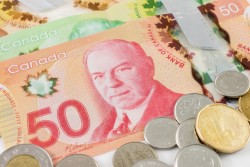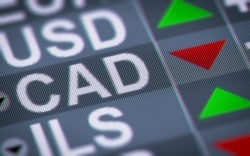Counting Canadian Coins: Understanding Currency in Niagara Falls
February 25, 2015 10:00 am
 Exchanging American currency for any other country’s money is an excruciating headache. Unless you are an economist, you undoubtedly have myriad concerns during the entire exchange process. Are you supposed to have more or less money than when you started? Why do different vendors advertise different rates? Is the new currency really supposed to be red, orange, and purple instead of green?
Exchanging American currency for any other country’s money is an excruciating headache. Unless you are an economist, you undoubtedly have myriad concerns during the entire exchange process. Are you supposed to have more or less money than when you started? Why do different vendors advertise different rates? Is the new currency really supposed to be red, orange, and purple instead of green?
Because the cultures of Canada and the United States are similar, many northbound travelers assume their American dollars will work just fine in the Great White North. However, Canada is a separate country with different laws and government — which means it produces its own currency. To avoid embarrassing mishaps in a foreign — albeit quite analogous — land, American travelers should review the rules of Canadian currency before setting out on any Canadian adventures.
The Basics
All Canadian cities and towns use the Canadian Dollar, which uses a similar symbol to the American Dollar: $. However, in places like Niagara Falls that see millions of American visitors every year, some vendors may denote Canadian prices using C$ or CAD.
Canadian currency comes in similar denominations as U.S. bills, such as $5, $10, $20, $50, and $100. However, there is one notable difference: The United States continues to mint $1 and $2 amounts in paper money, which is the preferred form of these denominations in the States; in contrast, Canada has wholly replaced these small denominations with coin equivalents, fondly nicknamed loonies and toonies. Some Americans may scoff at Canadians’ affectionate nicknames for their money, but the names originally came from the iconic Canadian loon depicted on the first $1 coins.
In addition, Canada mints quarters, dimes, and nickels — which many frustrated Americans often find jingling unusable in their pockets. A few years ago, Canada halted production of their one-cent penny due to the disparity between cost and value.
While the United States is making small steps away from the traditional green and white of paper money, Canadians abandoned a monochromatic system decades ago. The government argued that different colors for different denominations make finding the correct bills substantially easier. The bright reds, oranges, blues, and purples of their currency are a point of pride for many Canadians.
Exchange Info
 The American Great Recession of 2008 had a significant impact on the global economy, as the value of many countries’ currencies fell alongside the U.S. Dollar. Since 2009, the exchange rate between CAD and USD has fluctuated, but usually one is only slightly above or below the other.
The American Great Recession of 2008 had a significant impact on the global economy, as the value of many countries’ currencies fell alongside the U.S. Dollar. Since 2009, the exchange rate between CAD and USD has fluctuated, but usually one is only slightly above or below the other.
While the rate fluctuates constantly, the online exchange table shows that every $1 USD is equal to roughly $1.19 CAD. Thus, American travelers heading to Canada should come away from the teller with a slightly lower number of bills than they started with, though the number shouldn’t be too impactful. The exchange rate makes Canada a desirable destination for most American travelers, as a vacation there won’t be much more expensive than one in the States.
Niagara Falls
As stated previously, Niagara Falls is frequently visited by American tourists. Because of this — as well as the city’s proximity to the United States border — many vendors in Niagara Falls welcome the use of American currency. Plus, visitors can easily avoid the stress of the exchange booth by using credit and debit cards whenever possible.
Categories: Falls Avenue Resort
